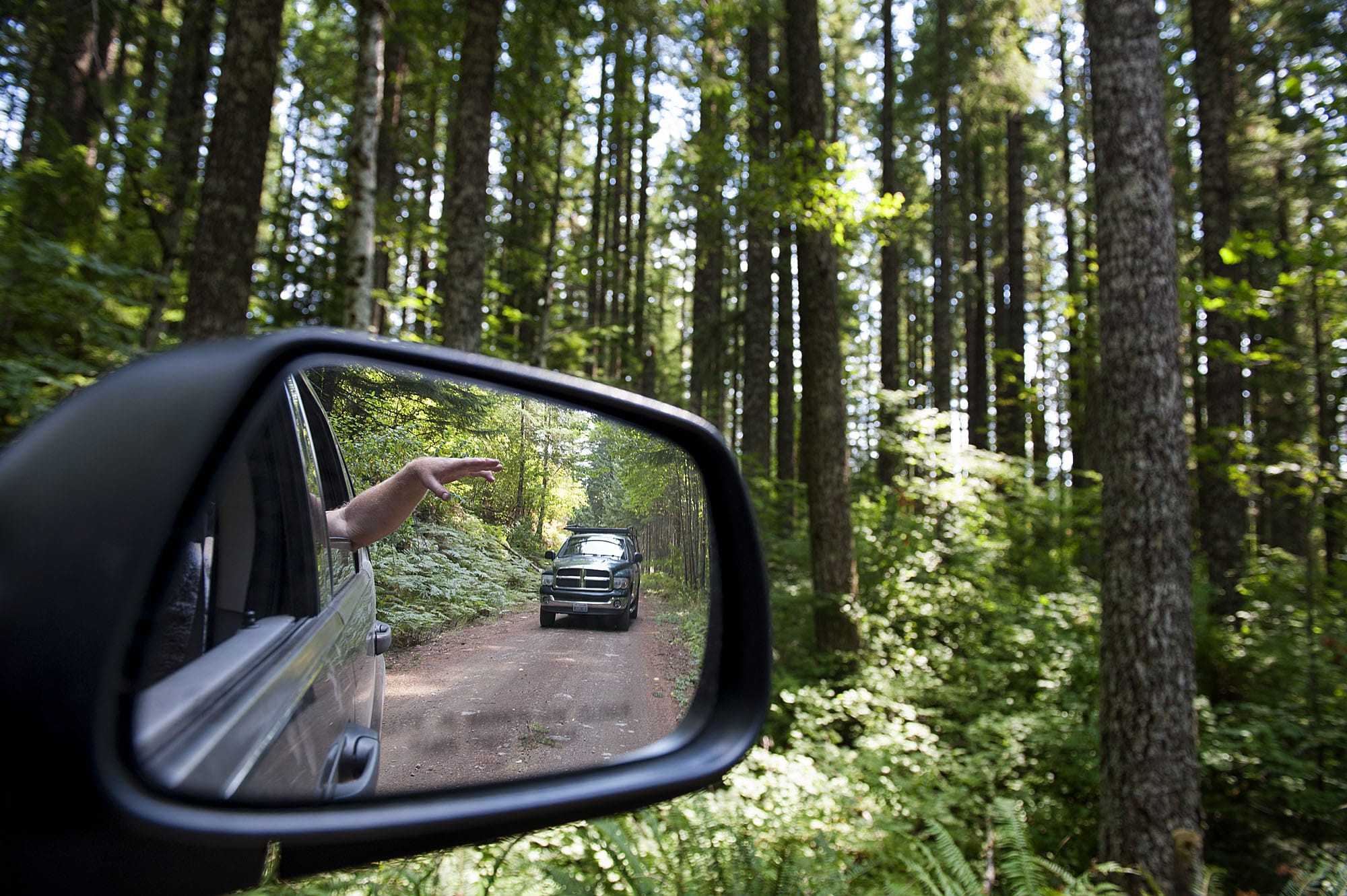STEVENSON — On a high, forested slope overlooking the Columbia River in Skamania County, there’s a clearing that many people wouldn’t call a pretty sight.
The area was clear-cut about three years ago, leaving a scattering of stumps and debris behind. Young trees and other vegetation have started to come back. But visitors might look and see a scarred landscape.
Tom Linde doesn’t see it that way. He and other local residents say they see a bigger picture, a landscape in transition that benefits wildlife, the forest and the community. (Linde uses the term “regeneration cut” to refer to such clearings.)
As trees grow back, the pace of change might be quicker than people realize, he said.
BY THE NUMBERS
• 80 percent: Portion of Skamania County that is federally owned, most of that the Gifford Pinchot National Forest.
• 2 percent: Portion of Skamania County in private residential or commercial use.
• 35.7 million: Number of board-feet of timber harvested from the Gifford Pinchot National Forest in 2014.
• 11,340: Population of Skamania County.
“In 10 years, you won’t even be able to look out over this valley,” Linde said.
Linde is part of a small group that calls itself Saving Skamania County. The self-funded, self-organized group aims to change the way forests, including the Gifford Pinchot National Forest, are managed. Members are trying to represent the local voices they feel have been largely overlooked in the decades-long debate over timber policy. Among their goals: More sustainable and predictable timber harvests that generate tax revenue for county services. Total harvest levels are a fraction of what they used to be, and Skamania County and other rural areas have suffered financially as a result.
“We are advocating for the forest and the community,” said Skamania County resident Tom Lannen. “We think there can be a balance. It’s not one side or the other.”
To be clear, they’re not calling for wholesale clear-cuts. But they’d like to see more of the thinning projects they argue can improve forest health, reduce the risk of catastrophic wildfires and generate revenue. Such an approach makes sense, Linde said, particularly for the single-age stands of trees that were planted after clear-cuts decades ago.
The idea of thinning projects is generally supported, at least in concept, across all sides. That’s true even for the Gifford Pinchot Task Force, an environmental group that has sparred with the U.S. Forest Service over its forest management practices in the past. What matters is the details, said Matt Little, the task force’s executive director.
“It all depends on the intensity of the thinning,” Little said, and the location of the project. Cutting too many trees, or too close to a stream or sensitive area, raises concerns, he said.
The Gifford Pinchot National Forest used to be one of the Northwest’s biggest timber producers, harvesting upwards of 600 million board feet in a single year at its peak. In 2014, the Gifford Pinchot forest produced 35.7 million board feet of timber. That number has ticked upward in recent years. But it remains far below what’s allowed under the Northwest Forest Plan, the landmark policy that changed the rules on forestland in the region and put many areas off-limits to logging.
The steep drop in timber harvests put Skamania County in a precarious financial position. About 80 percent of the county is federally owned, with the Gifford Pinchot forest making up most of that acreage. Another 8 percent is owned by the state. And 10 percent of Skamania County is designated as private timberland, which generates significant tax revenue only when harvested.
That leaves only 2 percent of the county in private residential or commercial use. It also leaves the county largely at the mercy of outside forces.
The people behind Saving Skamania County know it will be an uphill climb to significantly change forest management. Members acknowledge it may take some sort of legal action. There are a lot of other groups that share the same sentiment, even if they haven’t always coalesced, Lannen said.
“We’ve got 400 little canoes on the pond,” Lannen said. “We need a battleship.”
The Gifford Pinchot Task Force believes it’s “absolutely critical” to involve local voices in any discussions about the forest, Little said. The group was among the co-founders of two collaboratives that now help chart its future. Even Saving Skamania County has been charged with helping put together a 30-year management plan for a large swath of the forest in the Wind River area, Linde said.
Linde spent 35 years working for the forest service, including during the peak harvest times of the 1970s and 1980s. Even then, he said, there was a recognition among some within the agency that too much was being cut.
“We don’t want to go back to those days,” Linde said.
Now the pendulum has swung to the other extreme, he said.
“Like every controversy,” Linde said, “the middle point is where you need to be.”




